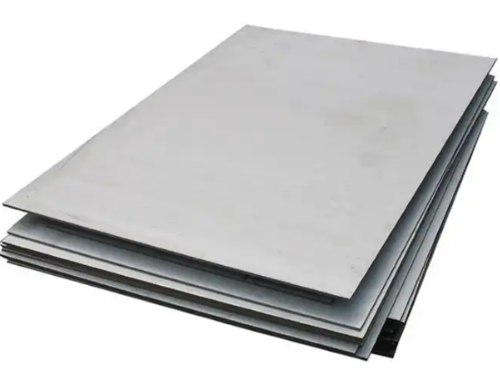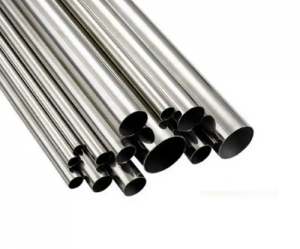High-Temperature Alloys: Inconel, Hastelloy, and Beyond

Introduction
High-temperature alloys represent a class of materials engineered to withstand extreme heat, corrosion, and mechanical stress. They have found indispensable applications in industries where conventional metals would succumb to harsh conditions.
Among these alloys, Inconel and Hastelloy stand out as exemplary materials. These alloys demonstrate remarkable performance in some of the most demanding environments. Let’s have a comprehensive understanding of them in this article.
Inconel: A High-Temperature Marvel
Inconel is a nickel-chromium-based alloy. It possesses exceptional resistance to high temperatures and oxidation. It is composed of nickel, chromium, iron, and traces of other elements. Such composition grants it superb strength at elevated temperatures.

Inconel Products
Inconel alloys also exhibit remarkable corrosion resistance in harsh environments involving acids, saltwater, and high-pressure conditions. Aerospace, gas turbines, and chemical processing industries extensively rely on Inconel for its reliability in extreme conditions.
Hastelloy: The Corrosion-Resistant Champion
Hastelloy is a family of nickel-based alloys. It is renowned for its unparalleled resistance to corrosion. So, it has become a go-to material in chemical processing, pollution control, and marine applications.

Hastelloy Products
Its unique composition, featuring nickel, molybdenum, chromium, and other elements, renders it highly resistant to a wide array of corrosive substances, including acids, chlorine, and seawater. Hastelloy's ability to maintain structural integrity in aggressive chemical environments has positioned it as a cornerstone material in critical industrial operations.
Key Features of High-Temperature Alloys:
High-temperature alloys can maintain their mechanical properties and structural integrity in extreme heat conditions. They exhibit exceptional resistance to thermal creep, oxidation, and corrosion at elevated temperatures, characteristics, while conventional metals often lack these features.
- Heat Resistance: These alloys maintain strength and stability at quite high temperatures, while standard metals deform or lose their structural integrity under these conditions.
- Oxidation Resistance: They resist oxidation and deterioration even when exposed to high-temperature, oxygen-rich environments. Such a property ensures prolonged durability.
- Creep Resistance: High-temperature alloys exhibit resistance to creep, a phenomenon where materials gradually deform under constant stress at elevated temperatures.
Related reading: The List Of Abundant Refractory Metals
Applications of High-Temperature Alloys:
High-temperature alloys find diverse applications across various industries due to their exceptional heat resistance and mechanical properties. Some key applications include:
- Aerospace Industry: Components in jet engines, turbines, and spacecraft require high-temperature materials.
- Chemical Processing: Alloys like Hastelloy are fundamental in environments involving corrosive chemicals and high temperatures.
- Power Generation: Gas turbines, boilers, and nuclear reactors utilize high-temperature alloys due to their thermal resistance and mechanical strength.
- Automotive Industry: Emerging applications in high-performance engines and exhaust systems benefit from these alloys’ heat resistance.
Related reading: High Temperature resistance materials
Beyond Inconel and Hastelloy
While Inconel and Hastelloy are stalwarts in high-temperature applications, other alloys like Waspaloy, Rene alloys, and Haynes alloys have emerged. These alloys offer tailored properties for specific high-heat environments.
Waspaloy, for instance, comes with its high-temperature strength and creep resistance, and it excels in aerospace applications. Rene alloys find use in gas turbine engines and showcase superior high-temperature stability. Haynes alloys are a series of cobalt-based superalloys. They demonstrate exceptional strength and corrosion resistance in aggressive environments.
Advancements and Future Directions
There is continuous research in metallurgy and material science in an attempt to push the boundaries of high-temperature alloys. Such innovations in alloy composition, microstructural design, and additive manufacturing techniques pave the way for heat resistant materials. Nanotechnology integration and computational modeling are driving advancements toward tailor-made high-temperature alloys for specific industrial needs as well.
Conclusion
High-temperature alloys like Inconel, Hastelloy, and their counterparts play an indispensable role across industries requiring resilience in extreme conditions. Their unique compositions and exceptional properties make them indispensable in aerospace, chemical processing, power generation, and various other critical sectors.
As research and technological innovations continue, the evolution of high-temperature alloys promises even greater capabilities. These innovations are going to shape the future of materials engineering in confronting the challenges of extreme environments.
Advanced Refractory Metals (ARM) specializes in the production of a variety of heat-resistant metals. With a commitment to excellence, ARM delivers top-tier supplies of high-quality Inconel and Hastelloy in various versatile forms. Flange, Powder, Bar/Rod, Tube/Pipe, Wire, and Plate/Sheet are all available. Hope that you can find the perfect high-temperature alloy for your projects and research.
{{item.content}}
LEVE A REPLY
{{item.children[0].content}}
{{item.content}}






